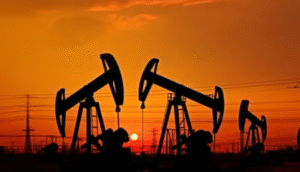$OIL $RUB $BTC
#Russia #Oil #OPEC #OilandGas #BrentCrude #WTI #EnergyMarket #Commodities #CrudeOil #Economy #Geopolitics #SupplyChain
Russia’s oil production is projected to see a slight decline in 2025 compared to the previous year, as Moscow adheres to the agreed OPEC+ schedule and compensates for prior overproduction, according to Russian Deputy Prime Minister Alexander Novak. The country expects to produce between 515 million and 520 million tons of oil this year, a marginal variation from the 516 million tons reported in 2024. This adjustment comes as part of Russia’s commitment to the OPEC+ production strategy, which seeks to balance global oil supply and stabilize prices. While the overall output will be slightly lower, Novak noted that oil processing levels are expected to increase this year, signaling shifts in Russia’s domestic oil industry operations.
The minor decline in Russia’s oil production may have limited immediate effects on global oil prices. However, its alignment with broader OPEC+ commitments could contribute to the overall tightening of supply, providing some upward momentum to crude prices. Brent crude and WTI have both traded within relatively stable price ranges in early 2024, but any sustained supply cuts or geopolitical tensions affecting Russian exports could create volatility. The impact on Russia’s economy will largely depend on the price dynamics of crude oil in the coming months, as oil and gas revenues play a crucial role in government funding, especially during ongoing geopolitical and economic challenges. Additionally, fluctuations in the Russian ruble ($RUB) could influence the profitability of oil exports, as exchange rate movements affect revenue conversion.
Market participants will closely monitor Russia’s ability to maintain production efficiency while meeting its OPEC+ commitments. A key factor will be how Moscow compensates for past overproduction and whether it adheres strictly to the agreed reduction targets. If Russia were to miss these targets, it could lead to tensions within OPEC+ and impact crude oil market sentiment. Additionally, stronger demand from China and India, two of Russia’s major oil buyers, could offset potential declines in production. Should global oil demand remain resilient, Russia’s strategy of refining more crude domestically may allow it to maintain profitability while reducing reliance on crude exports. This adjustment would also align with Moscow’s broader energy policies, which have sought to diversify revenue streams amid sanctions and evolving geopolitical realities.
Looking forward, investors in the energy sector should assess how Russia’s announcement factors into broader market conditions, including OPEC+ policy shifts and potential oil price fluctuations. While Russia’s slight production decline may not drastically alter market dynamics on its own, the cumulative effect of OPEC+ supply adjustments and geopolitical trends could shape price movements in the second half of 2024 and into 2025. As Russia increases its refining capacity, it could signal a shift toward greater domestic consumption or refined product exports, which could have downstream implications for global fuel markets. For investors holding positions in energy commodities or oil-related equities, developments in Russia’s production policies will remain a key factor influencing future market sentiment.











Comments are closed.